North Vietnam, Liberation of the capital of Hanoi, January 1st, 1955 (Michel Nr. 23-25); the Viet Minh did not waste much time after taking over Hanoi in October 1954 and they issued a new stamp set to commemorate the event. The stamp showed a soldier with two children in front of the “Pagoda of the lost sword” a symbol of the city. The nominals covered the same spectrum as the Victory at Dien Bien Phu which indicates that the domestic standard letter rate was still 100D at the beginning of 1955. All three nominals were printed of the same plate with just the value exchanged after each printing. The sheet size was 36 stamps (six rows of six stamps).
Postally used set, hard to find, note that the 50D stamp shows the retouched first zero in the 10.10.1954 date:
Here is a piece cut from a letter featuring one of the 50D values postally used.
Beware of cancelled to order (CTO) sets as they are worth only a fraction of the used catalogue value. They have the typical “Hanoi” corner cancel over four stamps.
While the production process at the Vietnam National Printing Works was a lot more professional than at Viet Bac there are a number of plate and perforation errors.
There is a plate error that occurs on all nominals in field A3. This is caused by the fact that the same base plate was used for all three values. Only the nominal value was changed in each printing process. This error is commonly called “Clouds in the Lake”. Take a look at the space just below the background tower and you will see cloud like shapes in the lake. Here is each nominal with the error.
This error is much harder to find used. Here is a specimen of the 150 Dong value used: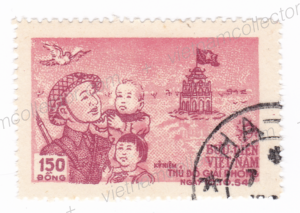
Below are two complete sheets of the 10D and 150D value. Notice the “Cloud in the Lake” plate errors on each Field A3 (third stamp from the left in top row). Both sheets also show the plate error “Clouds in the Sky” which can be found on field F4.
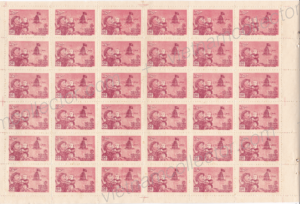 Sometimes crafty sellers will pass up a simulacrum (or color kiss) on the back of these stamps as an error. The effect is often called “permeability” which of course is pure nonsense. No color permeated here. The image is caused by putting complete sheets where the color was still moist on top of each other resulting in a mirror image of the stamp in more or less completeness on the back. Do not be fooled. This effect was quite common on this issue and does not justify any price increases. Actual printing on the backside of stamps has to be identical in image and not a mirror image of the stamp to be genuine.
Sometimes crafty sellers will pass up a simulacrum (or color kiss) on the back of these stamps as an error. The effect is often called “permeability” which of course is pure nonsense. No color permeated here. The image is caused by putting complete sheets where the color was still moist on top of each other resulting in a mirror image of the stamp in more or less completeness on the back. Do not be fooled. This effect was quite common on this issue and does not justify any price increases. Actual printing on the backside of stamps has to be identical in image and not a mirror image of the stamp to be genuine.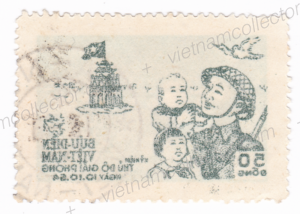
Along a similar line is grade of color adjustment and wear of the printing plate. Sometimes sellers will try to pass a poor print of a stamp as an error. Take a look at the two 10D value side by side. The left stamp was printed when the plate was still fairly new and hence offers much greater detail. The right stamp must have been printed with either with a lower degree of color adjustment or when the plate was already worn. The poor quality stamp does not justify any price increases.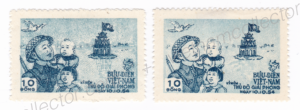
Below are some perforation errors. They do occur but are pretty rare.
Block of six 10 Dong stamps that show a significantly slanted perforation horizontally in-between the stamps.
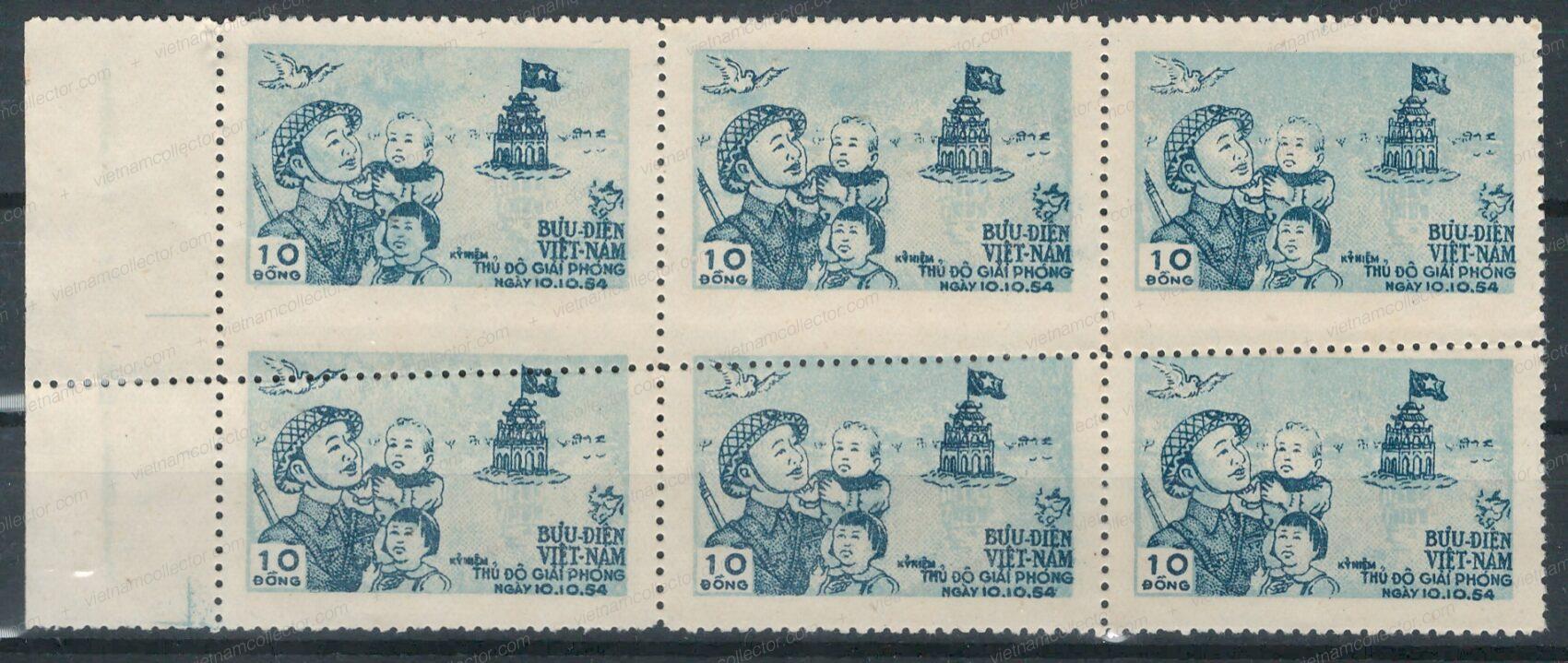
Below is a rather curious error. This block of four shows a mixed perforation. The perforation in the middle of the block is nowhere near the 11.5 of the rest of the block. This probably happened when the sheet was delivered to the post office imperforate in-between and locally a different sized perforation iron was applied to the row to provide it with some sort of perforation. Very rare post master perforation.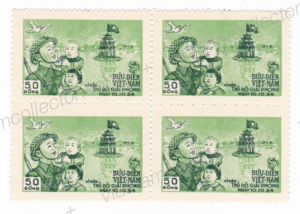
Here is a specimen of the 150D value imperforate on the left: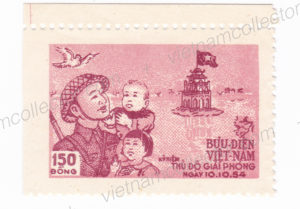
Below is a pair of two 150D stamps imperforate in-between: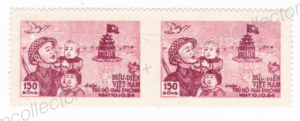
Postally used covers surviving from the era are still rare and consist almost exclusively of international mail to fellow communist countries. Here is a mixed franking paying the postcard rate of 180D to Czechoslovakia (October, 1956) that shows one copy of the 10D value. The 10D value is rather hard to find on cover as it was an extension value and basically could only be sensibly used in this combined fashion: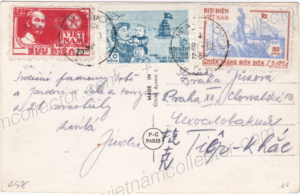
Rare single franking of the 50xu stamp on a local printed matter mailing from June of 1957 (ex Schwirtz) . The envelope was let open on purpose and it contains a printed invitation (contents preserved). This is the only local printed matter mailing the editor has ever seen from this period and been able to collect. The large majority of local printed matter mailings were simply tossed away or did not survive the ravages of time.
Mixed franking of the 50 and 150D Liberation of Hanoi stamps together with stamps from the Friendship and Dien Bien Phu sets paying an overall postage of 300D on an international surface letter sent in April of 1955 from Hanoi to West Germany. 300D was the correct postage at that time. The letter was sent by the Secretary of the President’s Council, Trinh Xuan-Con who was a high level party functionary that was Theo Klewitz’ inside contact into the North Vietnamese Government. He provided to Klewitz most of the early official and military letters that can still be found today. Without this connection very little postal history of occur and military letters would heave survived. Ex Klewitz.
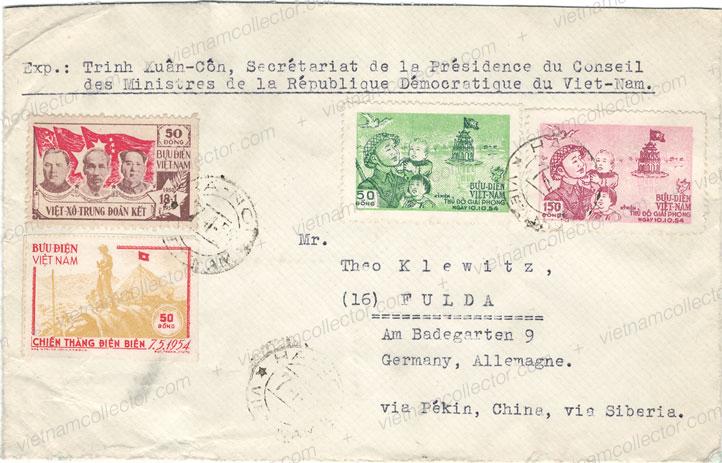
Mixed franking of the 1000D Return of the Government stamp together with the 20D Tran Dang Ninh stamps (2), 50D Liberation of Hanoi and 100D Textile Mill stamp (Perf 11.5) paying an overall postage of 1190D on a registered air mail letter sent by a member off the Czech Embassy from Hanoi to Czechoslovakia in March of 1957. The standard letter rate to Czechoslovakia amounted to 300D, the base air mail surcharge amounted to 260D and the surcharge for registration was 600D. So the letter is either over franked by 30D or was slightly heavier than the 5g that was covered by the air mail base rate.


Mixed franking of the 200D Railroad stamps (3) together with the 50D Liberation of Hanoi stamp paying an overall postage of 650D (300D base rate plus 350D for air mail surcharge) on an international air mail letter sent from Hanoi to West Germany. The letter requested an air mail route via Canton in China but this was manually changed to Peking (Beijing). Also while the top left of the letter states “Recommandee” it was not sent registered as is also evidenced by the postage. Registration surcharge alone would have amounted to 600D at the time so an overall postage of 1,250D would have been required. Ex Klewitz.
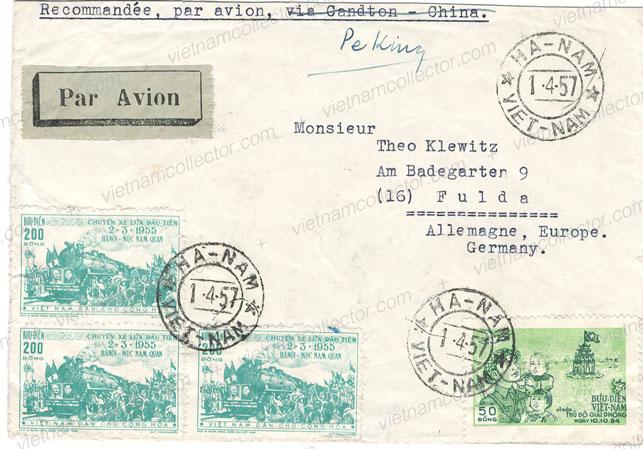
Below is a postcard to Czechoslovakia paying the 550D rate that was in force at the end of 1957 bearing one specimen of the 50D value. Again, this was this nominal’s function and so it mostly appears in mixed frankings like the one seen here. Note the dramatic postage increase caused by rapid inflation in little more than a year. 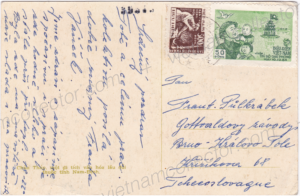
Stunning and very rare multiple franking of the 50D value paying the standard letter rate of 300D to China in force in 1955. note the rectangular Chinese censor stamp on the reverse.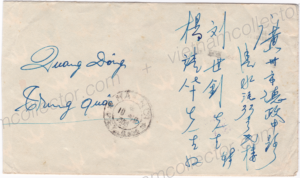
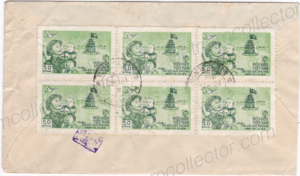
Letter mailed in February of 1957 from Hanoi to China bearing a pair of the 100D Dam stamps (Perf. 11.5) and a pair of the 50D Liberation of Hanoi stamps for an overall franking of 300D paying the surface letter rate to that country.
Here is a similar registered letter, also sent by the Czechoslovakian Embassy, mailed in January of 1957 and carrying one of the 1,000D Mac Thi Bu o’i stamps plus stamps from the Liberation of Hanoi, Bai Thu’o’ng dam and Tran Dang Ninh sets for an overall postage of 1,480D. Czech arrival cancel from February 4th, 1957.
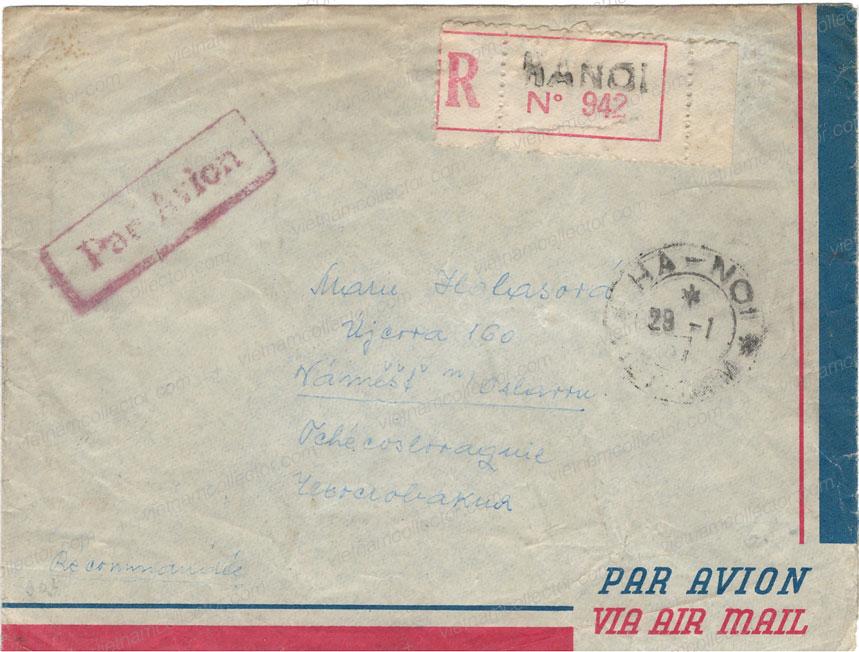
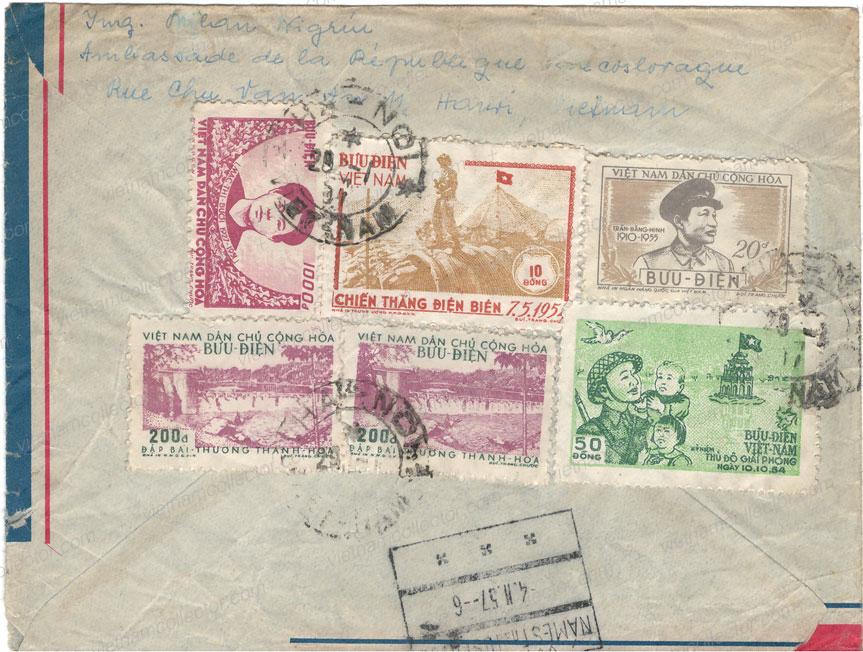
Mixed franking of one 150D value each (Dien Bien Phu and Liberation of Hanoi) paying the surface letter rate to China. Round and square Chinese censor hand stamps on the reverse.
Two similar frankings to China but this time with a pair of the 150D value, again paying the 300D standard surface letter rate to that country. Note the square and round Chinese censor hand stamp plus the interesting Chinese machine arrival stamp on the reverse..
Another mixed franking from January of 1958 sent from Hanoi to Czechoslovakia using the 300D World Union Congress stamp plus one 150D Liberation of Hanoi and 200D Bai Thu’o’ng stamp (Perf. 11.5) for an overall postage of 650D.
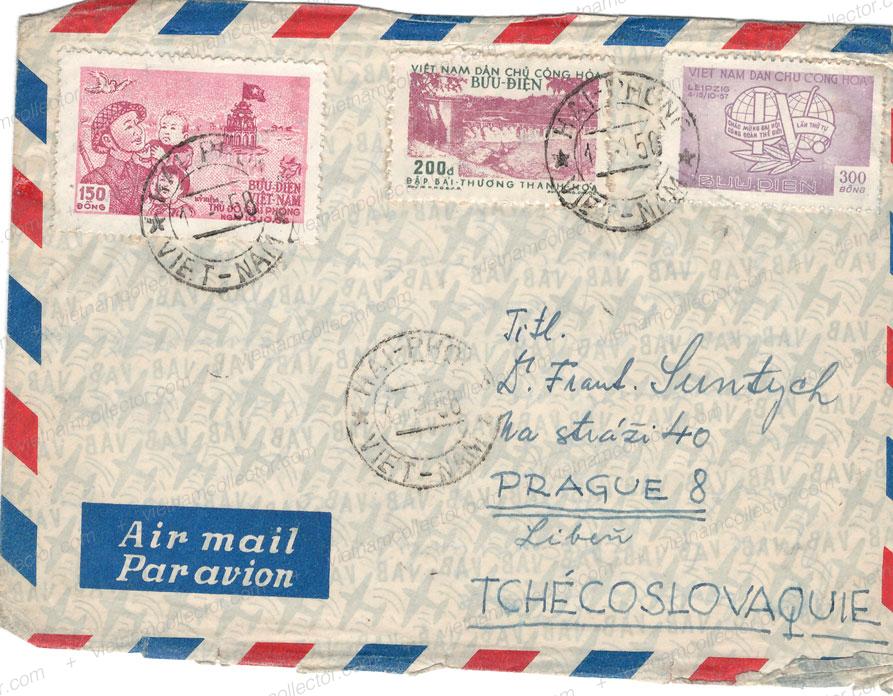
Below is a very rare destination letter to Luxembourg from February, 1955. The letter was sent by the North Vietnamese Philatelist Society to the President of the international stamp exhibition organization and it bears a 910 Dong franking. Though sent to a Western country to where postage was usually higher, this was unlikely the standard letter rate at the time as the envelope probably contained stamp specimen meant for the exhibition and this was heavier than normal. 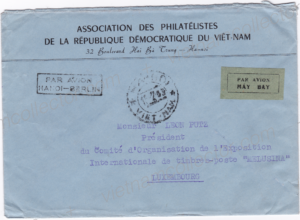
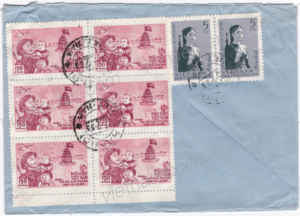
Registration Nr. 100032

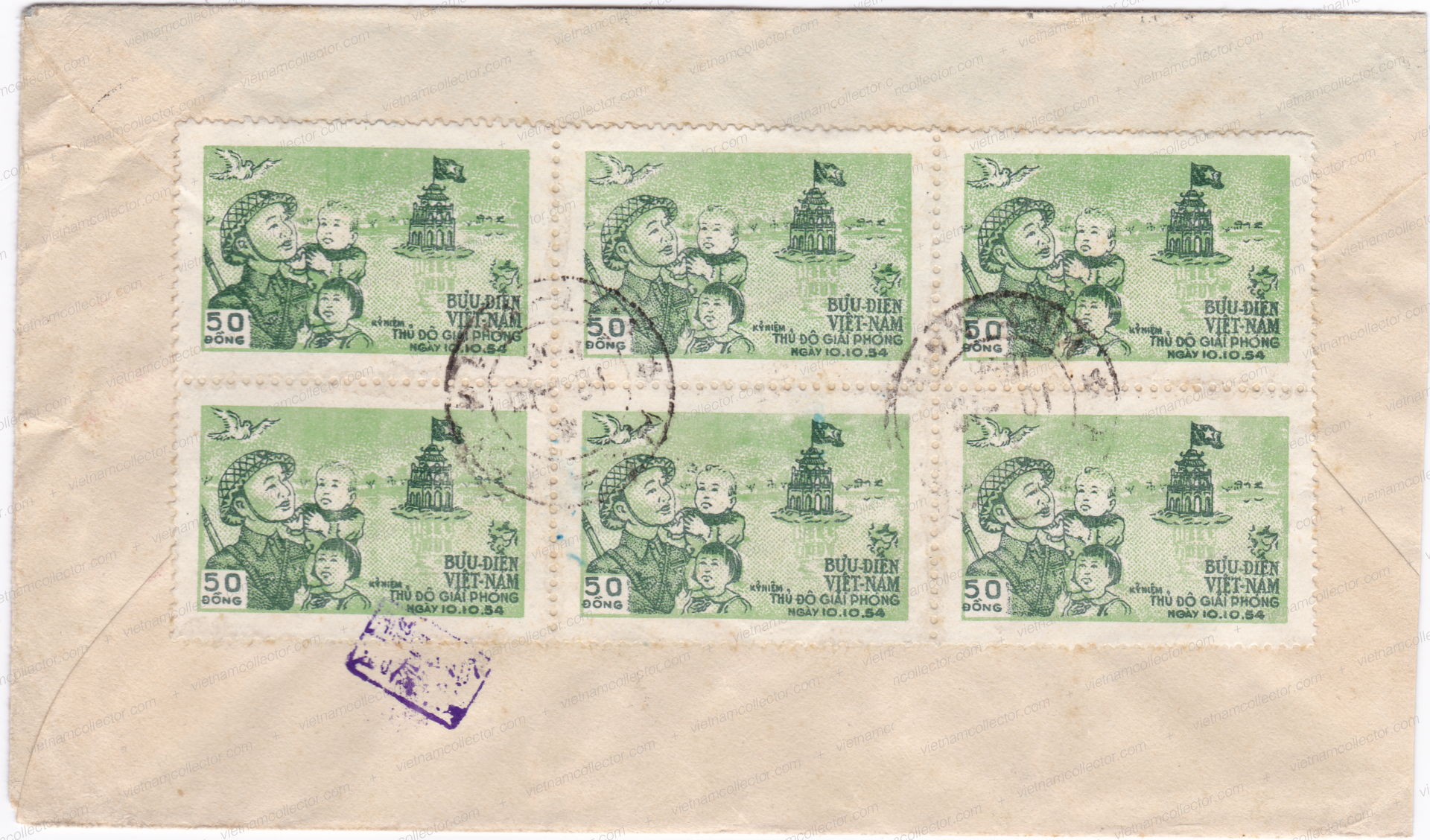


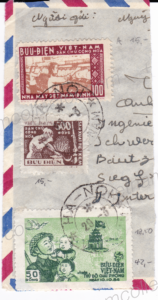

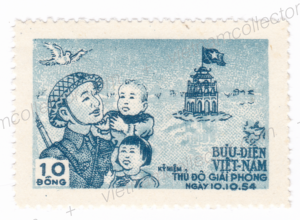
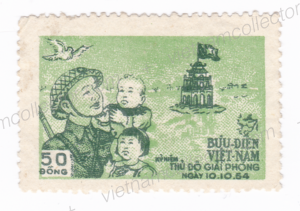
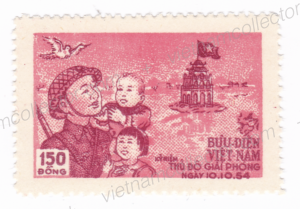
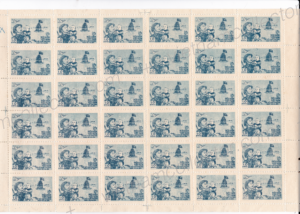
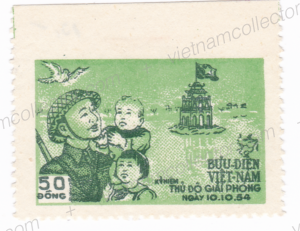
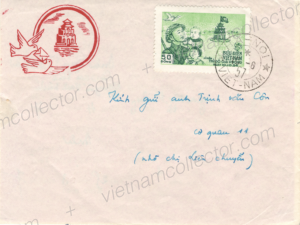
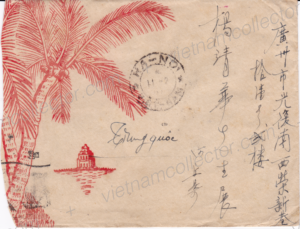
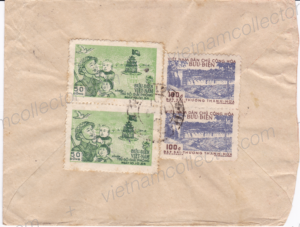
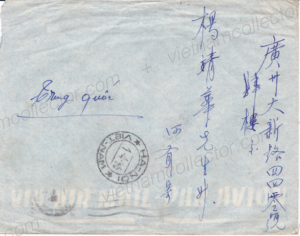
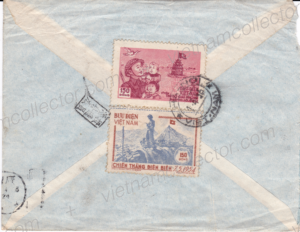
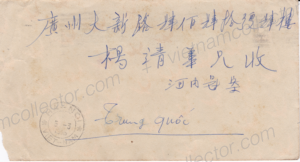
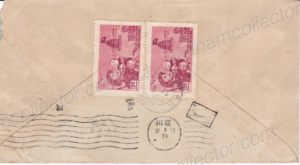
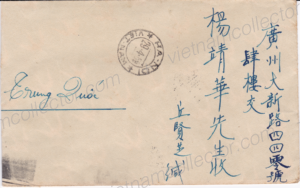
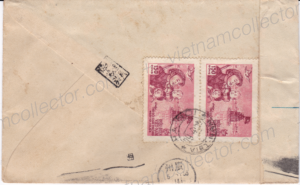
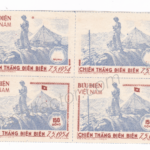
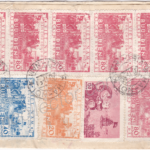


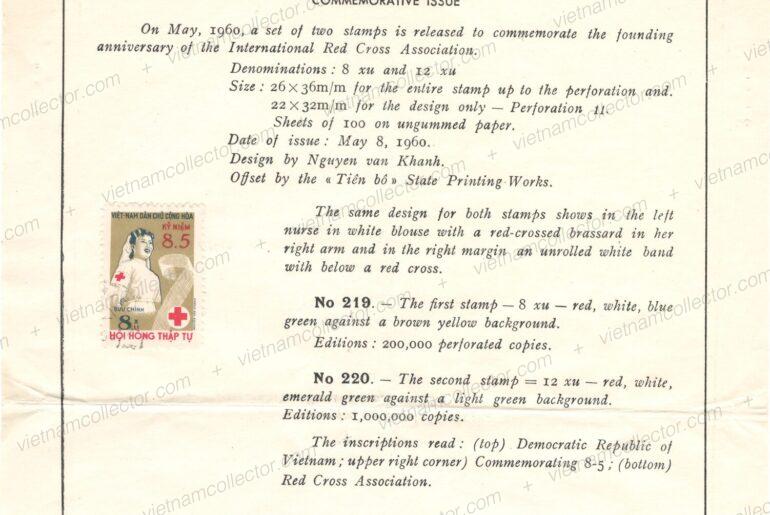
Comments are closed.